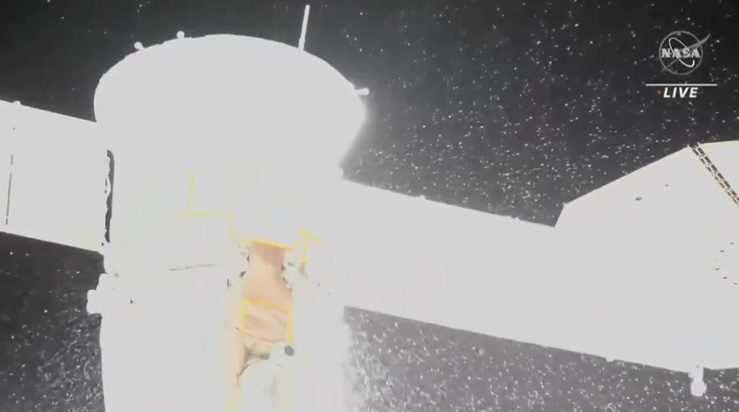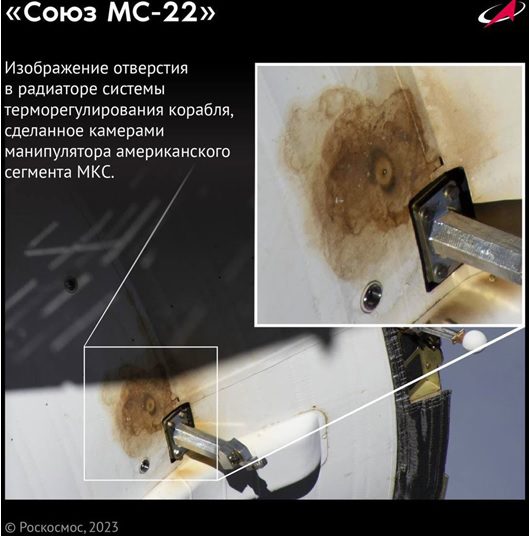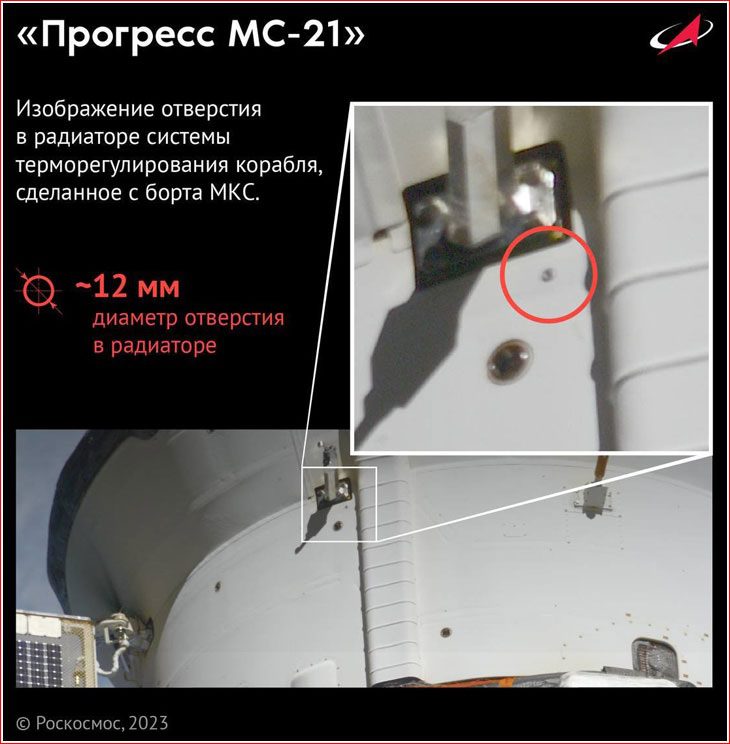A radiator leak of coolant on board the Soyuz MS-22 while it was attached to the International Space Station (ISS) in December 2022 was just the start of problems. Not only was a Cosmonaut spacewalk postponed, but an empty Soyuz spacecraft was even requested to be sent to the ISS to bring the astronauts and cosmonauts home. Soyuz MS-23 is now being prepared for launch. The Russian space agency/conglomerate Roscosmos laid the blame squarely on a meteoroid strike.
Seradata and other industry observers were initially sceptical, not least because the Russian space industry has a history of blaming space debris or micrometeoroid strikes when, in fact, a quality control issue was more likely to be nearer the mark. According to Seradata’s launch and satellite database, Russian spacecraft manufacturers are proportionately more likely than any other major satellite manufacturing nation (those with more than 20 satellites active in orbit) to do exactly that.
Recent examples include a heat pipe failure on Express AM-11 in 2006 that was attributed to a micrometeoroid or debris strike, and Meridian-1’s retirement being blamed on an alleged debris strike in 2007. A claimed debris strike in 2013 caused the Blits passive reflecting satellite to split into two. Meteor M2-2 was retired due to an alleged debris strike in late 2019 and the antenna and heaters of Express-80 were the victims of apparent strike damage in 2020.
Suspicions were raised further when a similar coolant leak occurred on the Progress MS-21 craft in January making a generic cause much more likely (Soyuz and Progress craft are essentially the same core design). To counter these claims Roscosmos released images showing the site of the leak on Soyuz MS-22 with a “puncture wound/crater” and discolouration on its radiator which would be typical for a micrometeoroid (meteor) strike (the apparent direction of travel was a factor in ruling out a debris strike). A less visible ‘impact’ wound was apparent on an image of Progress MS-21, but it still looked like an impact crater.
Roscosmos initially elected to delay the launch of the crewless Soyuz MS-23 while it investigated the failure of Progress MS-21 to see if there was any relationship between it, Soyuz MS-22 and Soyuz MS-23, which was almost ready to be launched. It has since allowed the launch to take place with the inference being that it was a natural cause for both. Nevertheless, while quality control issues could be ruled out, the two closely related incidents are a concern for the space agencies with astronauts aboard the ISS as they imply that micrometeoroid strikes are a much higher risk to safety than previously thought.
NASA, ESA and the other ISS partners were, at least, grateful that Roscosmos did not try to blame NASA astronauts for damage to their craft. In 2018 the Russian agency accused NASA astronaut Serena Auñón-Chancellor, a crew member of the ISS, of deliberately drilling a 2 mm hole through the wall of Soyuz MS-09 either as an act of sabotage or to stop crack propagation. It was later accepted that the damage was more likely to have been caused in an accidental manufacturing error.
It now seems likely that micrometeoroid strikes did cause damage to either Soyuz MS-22 or Progress MS-21 – or both. Micrometeoroid strikes do happen in real life, including to Russian spacecraft. However, when it comes to claims about the causes of its space failures and anomalies (or indeed about many other things), the Russians have become like the fabled “boy who cried wolf”. That is, we may not believe them anymore…even when they are right.
Update on 24 February: The uncrewed Soyuz MS-23 spacecraft was successfully launched onboard a Soyuz 2-1A from the Baikonur Cosmodrome, near Tyuratam in Kazakhstan, at 0024 GMT on 24 February. Soyuz MS-23, a replacement for the damaged Soyuz MS-22, docked with the Poisk module at 0058 GMT on 26 February.










